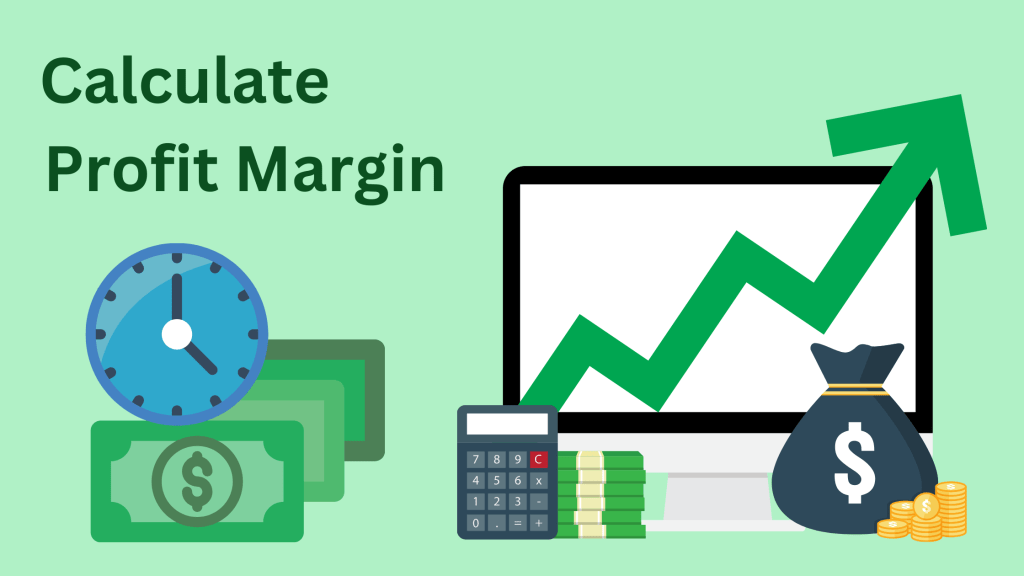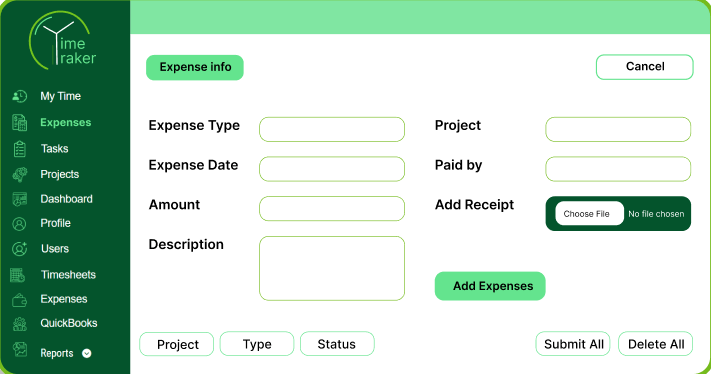How to Calculate Profit Margin: Why It Matters for Your Business

Understanding how to calculate profit margin is essential for any business aiming to optimize its financial performance. Profit margin measures how much of every dollar of revenue translates into profit, and it is a key indicator of your business’s financial health. Accurate profit margin calculations rely on precise tracking of both revenues and expenses, and this is where tools like Time Traker come into play. In this article, we’ll explore how to calculate margin, why it matters, and how effective time tracking can enhance your profitability analysis.
What is Profit Margin?
Profit margin is a financial metric that indicates the percentage of revenue that exceeds the cost of goods sold (COGS) and operating expenses. Understanding profit margins helps businesses gauge their efficiency and overall profitability.
Profit Margin Overview:
- Definition: Profit margin is calculated as the ratio of net income to total revenue, expressed as a percentage. It reflects the efficiency of converting sales into profit.
- Types of Profit Margins:
- Gross Profit Margin: Measures the percentage of revenue remaining after deducting COGS.
- Operating Profit Margin: Reflects the percentage of revenue left after deducting operating expenses.
- Net Profit Margin: Indicates the percentage of revenue remaining after all expenses, including taxes and interest, have been deducted.
Margin How to Calculate: Different Methods
Calculating profit margin involves several methods depending on the type of margin you need to determine:
Gross Profit Margin Calculation
Gross profit margin focuses on basic profitability:
To calculate the gross profit margin, use the following formula:
Gross Profit Margin = (Gross Profit / Revenue) × 100
- Gross Profit: Revenue minus COGS.
- Revenue: Total income from sales before any deductions.
Example: If your business has $500,000 in revenue and $300,000 in COGS, the gross profit margin is calculated as:
Gross Profit Margin = ($500,000 – $300,000 / $500,000) × 100
Operating Profit Margin Calculation
This margin includes operating expenses:
To calculate the operating profit margin, use the following formula:
Operating Profit Margin = (Operating Profit / Revenue) × 100
- Operating Profit: Gross profit minus operating expenses.
- Revenue: Total income from sales.
**Example:** With $500,000 in revenue, $150,000 in operating expenses, and $200,000 in gross profit, the operating profit margin is calculated as:
Operating Profit Margin = ($200,000 – $150,000 / $500,000) × 100
Net Profit Margin Calculation
The net profit margin reflects overall profitability:
To calculate the net profit margin, use the following formula:
Net Profit Margin = (Net Profit / Revenue) × 100
- Net Profit: Revenue minus all expenses, including COGS, operating expenses, interest, and taxes.
- Revenue: Total income from sales.
**Example:** If your business has $500,000 in revenue and $450,000 in total expenses, the net profit margin is calculated as:
Net Profit Margin = ($500,000 – $450,000 / $500,000) × 100
Why Profit Margin Matters for Your Business

Financial Health and Performance
Understanding profit margin helps businesses evaluate their financial health:
- Profitability Assessment: Profit margin shows how efficiently your company converts sales into profit.
- Cost Management: A lower margin might indicate high costs or pricing issues, while a higher margin suggests effective cost management and pricing strategies.
Business Decision-Making
Profit margin analysis is vital for strategic decisions:
- Pricing Strategies: Accurate margin calculations help set effective pricing strategies to ensure profitability.
- Expense Management: Identifying cost reduction opportunities can improve profit margins without affecting product quality.
Investment and Growth
Profit margins influence investment decisions and growth strategies:
- Investor Confidence: Investors often evaluate profit margins to assess financial stability and growth potential.
- Growth Planning: Margin analysis supports decisions regarding expansion, investment, and resource allocation.
How Time Traker Enhances Profit Margin Calculation
Effective margin calculation requires accurate tracking of time and expenses, making tools like Time Traker invaluable:
Accurate Expense Tracking

Time Traker helps in monitoring expenses related to various projects, which is crucial for accurate profit margin calculations:
- Expense Recording: Track project-related expenses to ensure precise cost calculation.
- Budget Management: Stay within budget by monitoring and controlling project expenses.
Improved Time Management
Efficient time management supports better cost allocation and profitability analysis:
- Time Tracking: Record time spent on different tasks to evaluate project costs and profitability.
- Integration: Seamlessly integrate with financial software to keep data up-to-date for accurate margin analysis.
Comprehensive Financial Insights
Time Traker provides insights that contribute to better financial management:
- Reporting: Generate detailed reports to analyze project profitability and overall financial performance.
- Data Accuracy: Ensure financial data accuracy by tracking time and expenses accurately.
Conclusion
Calculating profit margin is crucial for understanding and improving your business’s financial performance. By mastering how to calculate margin and utilizing tools like Time Traker, you can gain valuable insights into profitability, manage costs effectively, and make informed business decisions. Regularly analyzing profit margins allows you to stay competitive, optimize your financial strategies, and achieve long-term success.
Harness the power of precise margin calculations and effective time tracking to enhance your business’s financial health and drive growth.
